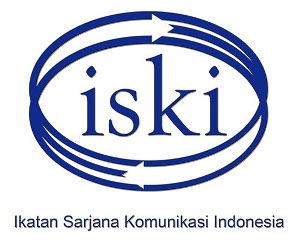Commodification of Poverty in Social Media
Abstract
Keywords
Full Text:
PDFReferences
Book:
Mosco, V. (2009). The Political Economy of Communication (second edition). London: Sage Publications.
Piliang, Yasraf Amir. (2010). Hipersemiotika: Tafsir Cultural Studies atas Matinya Makna. Yogyakarta: Jalasutra.
Schreier, M. (2012). Qualitative Content Analysis in Practice. London: Sage Publications Ltd.
Sobur, A. (2006). Analisis Teks Media: Suatu Pengantar untuk analisis Wacana, Analisis Semiotika, dan Analisis Framing. Edisi Keempat. Bandung: PT. Remaja Rosdakarya.
Sobur, A. (2006). Semiologi Komunikasi. Bandung: PT Remaja Rosdakarya.
Sugiyono, P. D. (2013). Metode Penelitian Kuantitatif, Kualitatif, dan R&D. Bandung: Alfabeta.
E-book:
Mayring, Philipp. (2014). Qualitative Content Analysis: Theoretical Foundation, Basic Procedures, and Software Solutions. Klagenfurt. Retrieved from https://www.researchgate.net/publication/266859800_Qualitative_content_analysis_-_theoretical_foundation_basic_procedures_and_software_solution
Journal Online:
Aprilita, D. (2016). Representasi Kecantikan Perempuan dalam Media Sosial Instagram (Analisis Semiotika Roland Barthes pada Akun @mostbeautyindo, @Bidadarisurga, dan @papuan_girl). Paradigma, 4(3). Retrieved from https://ejournal.unesa.ac.id/index.php/paradigma/article/view/16891
Arya, Nosakros., Hafied Cangara., A. Alimuddin Unde. (2013). Komodifikasi Kemiskinan dalam Televisi Indonesia: Studi Komparatif antara Program “Jika Aku Menjadi” di Trans TV dengan Program “Bedah Rumah” di RCTI. Jurnal Komunikasi KAREBA, Vol. 2, No. 2 April - Juni 2013. Retrieved from http://journal.unhas.ac.id/index.php/kareba/article/download/361/218
Parker, C.; Saundage, Dilal; Lee, Chia Yao (2011). Can qualitative content analysis be adapted by social informaticians to study social media discourse? A position paper. Deakin University. Conference contribution. Retrieved from https://hdl.handle.net/10536/DRO/DU:30041098
Purwitasari, Endah., Muhammad Althaf., Choirul Umam. (2022). Analisis Framing Komodifikasi Kemiskinan dalam Konten Video pada Akun @Baimpaula. Jurnal Ilmu Komunikasi, Vol 12 No. 2 September 2022. Retrieved from https://jurnal.akmrtv.ac.id/index.php/jk/article/view/301
Seba, N. G., & Prihandini, A. (2021). Analisis Makna Denotasi pada Fitur “Mendengarkan secara Online” di Aplikasi Spotify. Jurnal Bahasa, Sastra, dan Budaya, 1(2), 161-164. Retrieved from https://ojs.unikom.ac.id/index.php/mahadaya/article/view/5379/2704
Utami, Atika Budhi dan Assagaf, Aviska Ahmad. (2020). Kemiskinan Dalam Tayangan TV Indonesia. Jurnal Konvergensi, Vol. 2 No. 1 (Februari 2020) Hal : 80-161. Retrieved from https://journal.paramadina.ac.id/index.php/IK/article/view/450
DOI: http://dx.doi.org/10.30813/s:jk.v18i1.4950
Refbacks
- There are currently no refbacks.
Copyright (c) 2024 Bela Fataya Azmi

This work is licensed under a Creative Commons Attribution-ShareAlike 4.0 International License.
Publisher
Editorial Board SEMIOTIKA: Jurnal Komunikasi
Department of Communication
Faculty of Social Science and Humanities
"UNIVERSITAS BUNDA MULIA"
Lodan Raya St No.2, North Jakarta 14430
Phone: +62 21 692 9090 ext. 348
Email: SEMIOTIKA@ubm.ac.id













